Explore Central Vietnam cuisine: The best street foods & Traditional meals
Central Vietnam cuisine is a feast for the senses, blending bold flavors, fresh ingredients, and time-honored cooking techniques. In this article, we’ll explore the best street foods and traditional meals that define Central Vietnam’s rich culinary heritage.
Characteristic of Central Vietnam cuisine
Central Vietnam’s cuisine is a unique blend of bold flavors, fresh ingredients, and diverse cooking techniques. Influenced by the region’s geography, climate, and history, its food stands out with distinctive characteristics that make it different from Northern and Southern Vietnamese cuisine.

- Spicy and bold flavors: Unlike the milder flavors of the North or the sweeter taste of the South, Central Vietnam’s dishes are known for their intense, spicy, and well-seasoned profiles. Chili, black pepper, shrimp paste, and lemongrass are commonly used to enhance the depth of flavors.
- Fresh and local ingredients: With its long coastline and fertile land, Central Vietnam offers an abundance of fresh seafood, herbs, and vegetables. Dishes often incorporate fish, shrimp, squid, clams, and fresh greens, ensuring a balance of nutrition and taste.
- Diverse cooking methods: The region showcases a variety of cooking techniques, including grilling, steaming, stewing, and fermenting. Many traditional dishes, such as bun bo Hue and com hen, require slow cooking to develop their rich flavors.
- Strong use of fermented ingredients: Fish sauce, shrimp paste, and fermented vegetables play a crucial role in Central Vietnamese cooking, adding a distinctive umami taste to many dishes. These ingredients help create the deep, savory flavors that define the region’s cuisine.
With these unique characteristics, Central Vietnam’s cuisine offers a dynamic and unforgettable culinary experience that continues to captivate food lovers from around the world.
Must-try street foods in Central Vietnam
Central Vietnam’s vibrant street food scene is a paradise for food lovers. From bustling markets to hidden alleyway stalls, the region offers a variety of delicious and affordable dishes. Each bite reflects the bold flavors and rich culinary traditions of the area. Here are some of the must-try street foods that showcase the essence of Central Vietnam cuisine.
Banh Beo (steamed rice cakes)
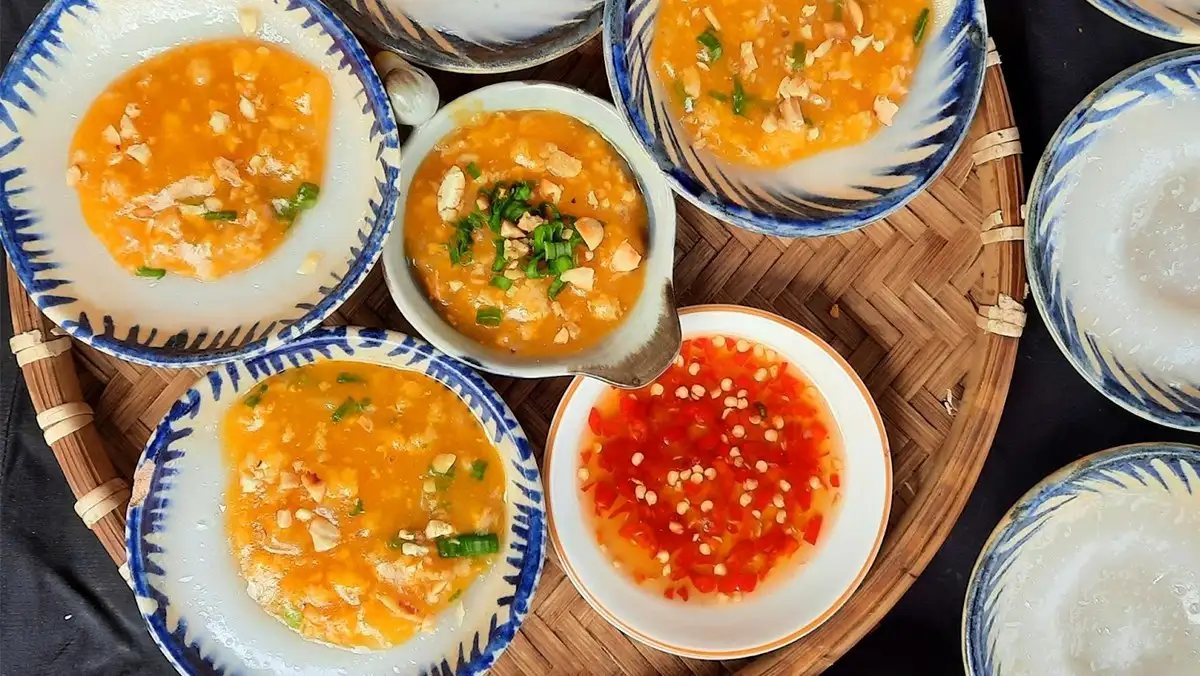
Banh beo is a popular Central Vietnamese snack made from steamed rice flour, creating a soft and slightly chewy texture. It is topped with minced shrimp, crispy pork skin, and scallion oil, adding layers of flavor and texture. Served in small ceramic dishes, banh beo is enjoyed with a light fish sauce, making it a simple yet delicious street food. Originating from Hue, this dish reflects the elegance of imperial cuisine while remaining a beloved everyday treat.
Banh Xeo (crispy Vietnamese pancake)
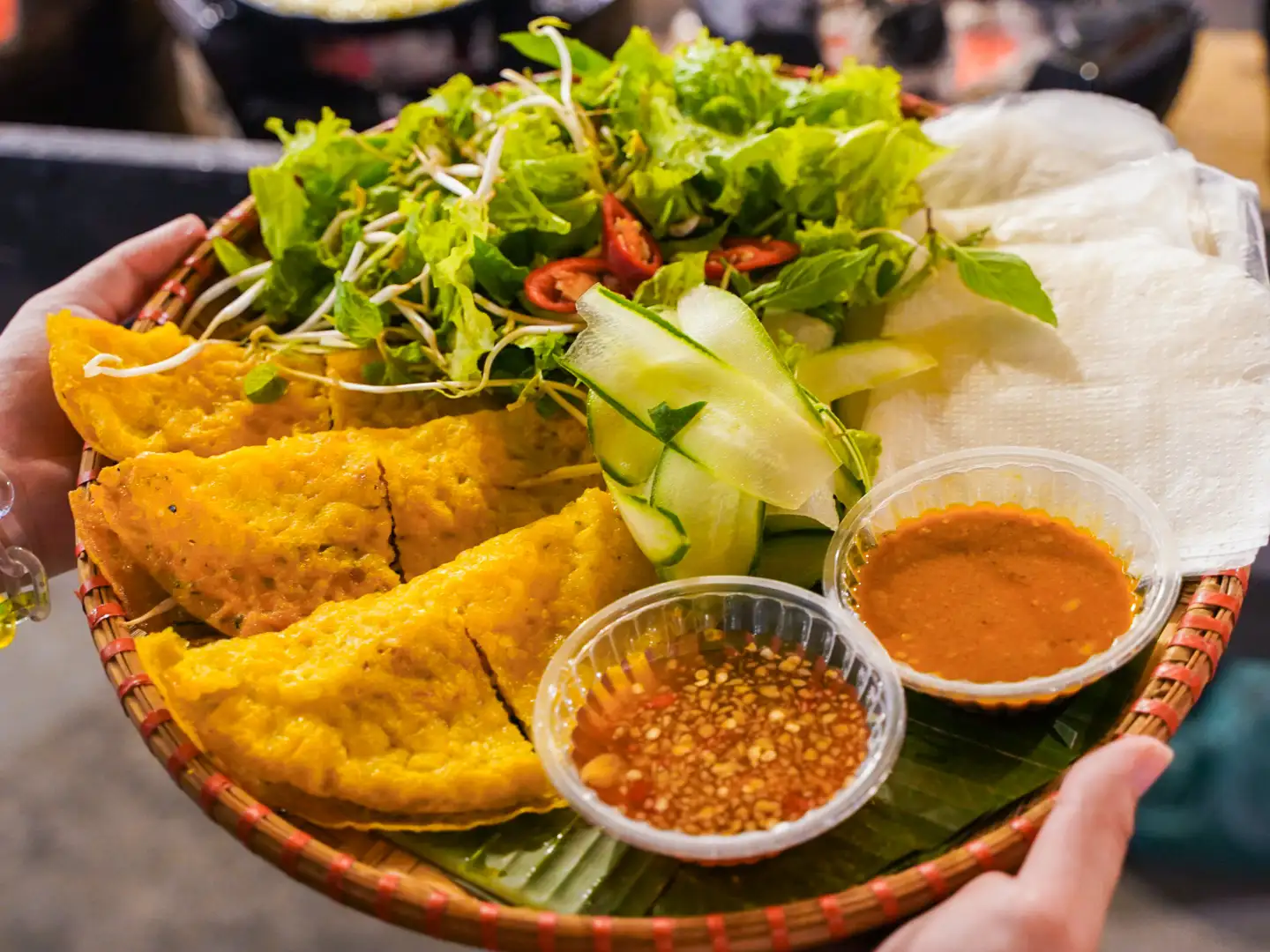
Golden, crispy, and bursting with flavor, banh xeo is a beloved street food in Central Vietnam. The batter, made from rice flour, turmeric, and coconut milk, is pan-fried to perfection, creating a delicate crunch. Inside, a tasty mix of shrimp, pork, and bean sprouts adds richness and freshness. To enjoy it the local way, wrap a piece in rice paper with fresh herbs and dip it into a sweet-savory fish sauce. The smaller, crispier version found in Central Vietnam makes it a standout among regional variations.
Nem lui (grilled pork skewers)
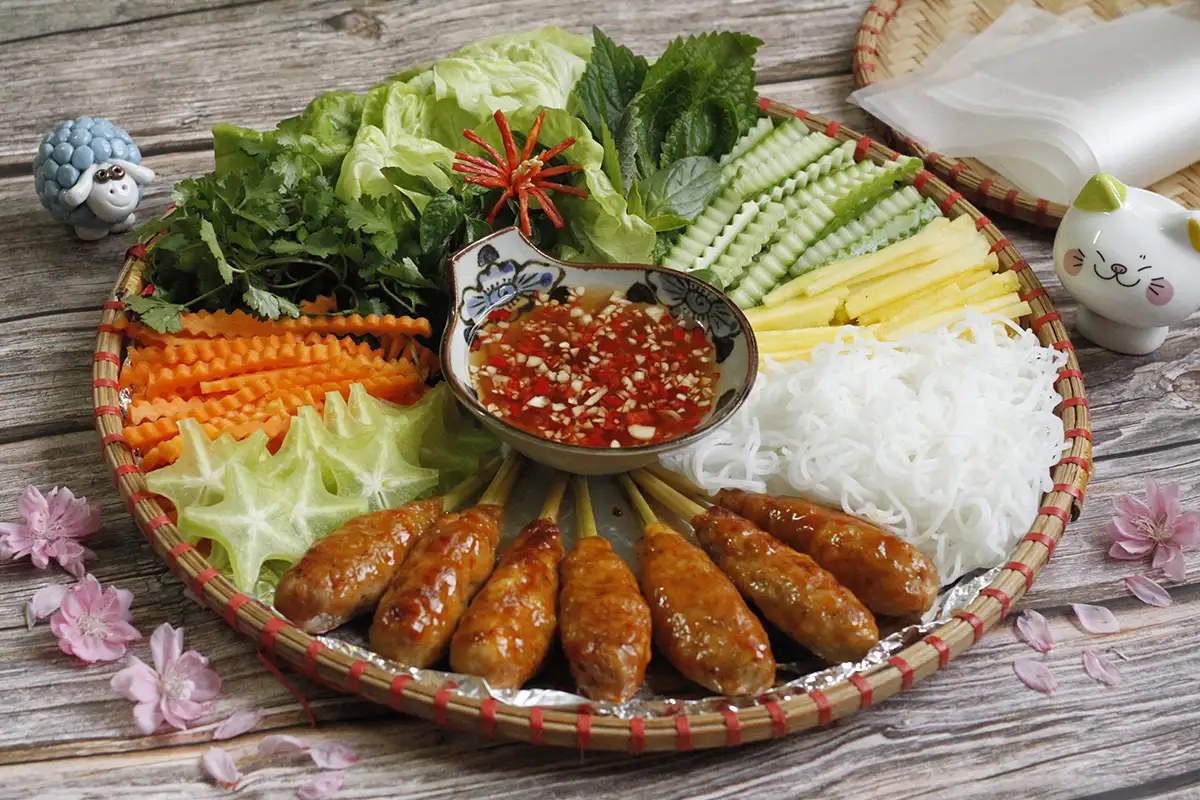
Nem lui is a flavorful grilled pork dish that perfectly captures the smoky, aromatic essence of Central Vietnamese cuisine. Ground pork is seasoned with garlic, fish sauce, and spices before being wrapped around lemongrass stalks and grilled over charcoal. The result is juicy, fragrant skewers with a subtle citrusy aroma from the lemongrass. Served with rice paper, fresh herbs, and a rich peanut dipping sauce, nem lui is not just a dish but an interactive dining experience, especially popular in Hue.
Banh Trang Nuong (grilled rice paper)
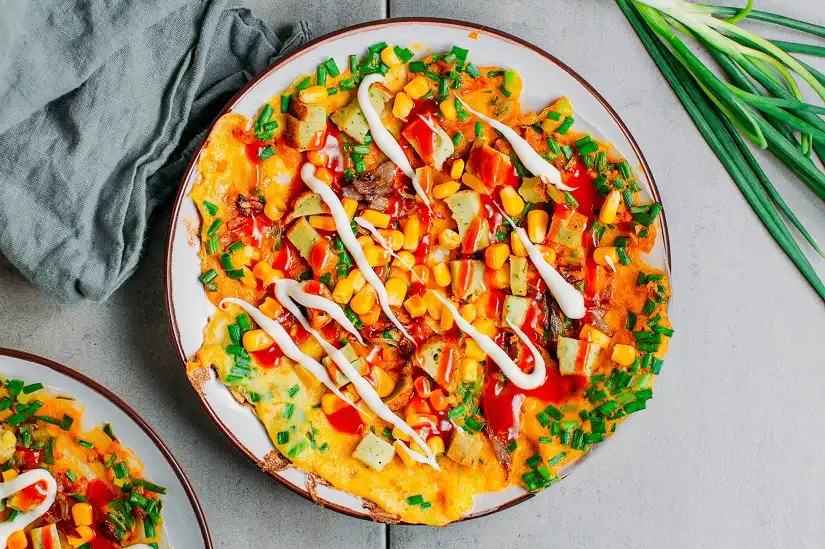
Crispy, smoky, and packed with flavor, banh trang nuong is often called “Vietnamese pizza.” A sheet of rice paper is grilled over charcoal and topped with egg, minced pork, dried shrimp, scallions, and a drizzle of spicy sauce. As it crisps up, the flavors blend together, creating a deliciously crunchy snack. Popular at night markets and street stalls, this simple yet addictive dish is a favorite among locals and visitors alike.
Che Hue (Hue sweet soup)
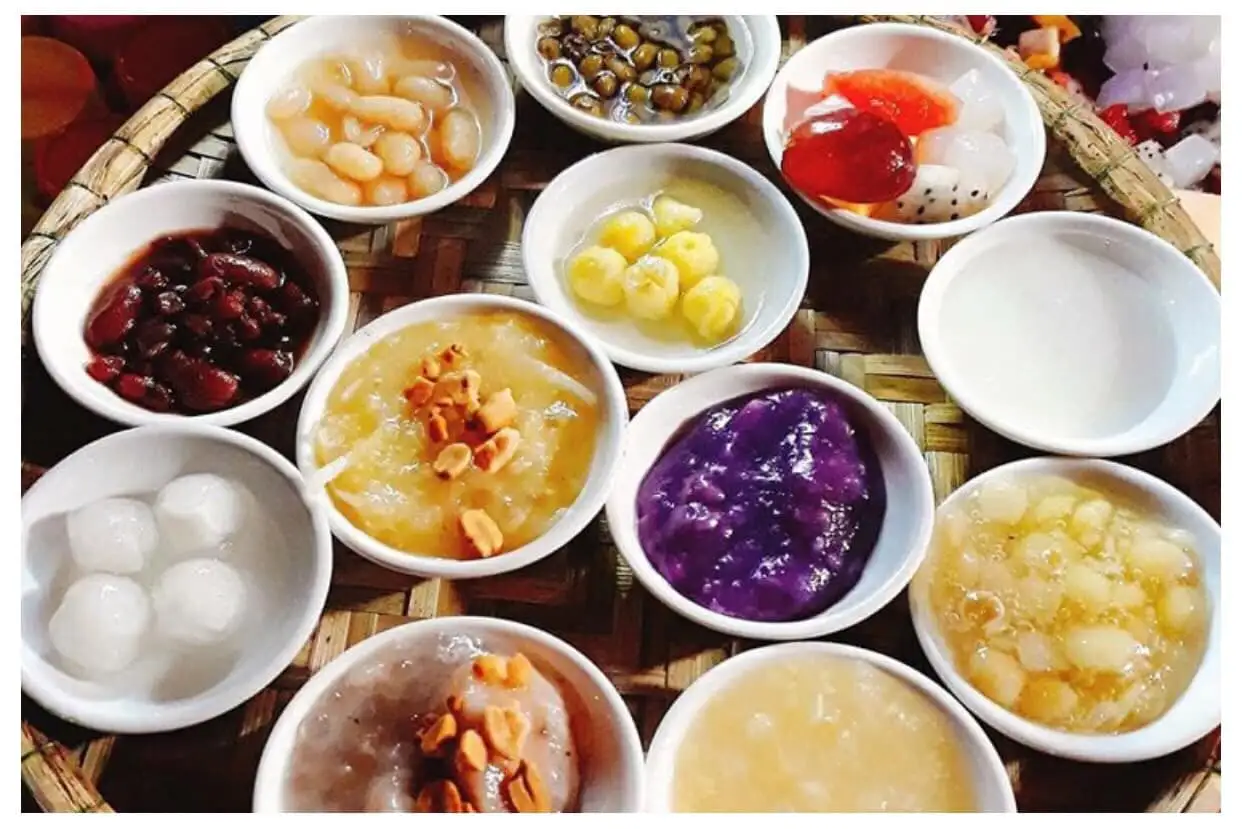
Che Hue is a collection of traditional sweet soups, each offering a unique combination of ingredients and textures. From chewy tapioca pearls and mung beans to lotus seeds and coconut milk, these desserts range from light and refreshing to rich and creamy. Often enjoyed as a midday snack or after a meal, che Hue reflects the imperial city’s refined culinary heritage. Whether served hot or cold, this colorful treat is a delightful way to experience the sweeter side of Central Vietnamese cuisine.
Banh Bot Loc (tapioca dumplings)
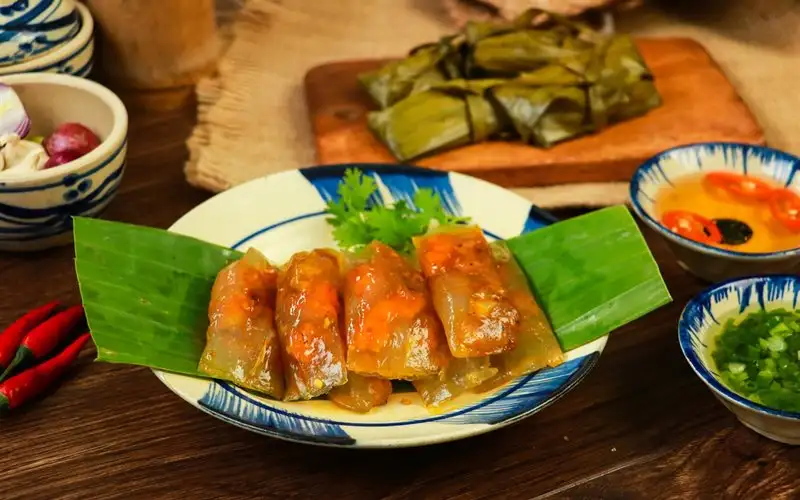
Banh bot loc is a small yet irresistible treat from Hue. Made from tapioca flour, these chewy dumplings are filled with shrimp and pork, then wrapped in banana leaves and steamed to perfection. The contrast between the soft, gelatinous dough and the rich, savory filling is what makes them so addictive. Dipped in sweet-savory fish sauce with a touch of chili, each bite is a delightful balance of taste and texture.
Banh Mi Que (Vietnamese stick baguette)
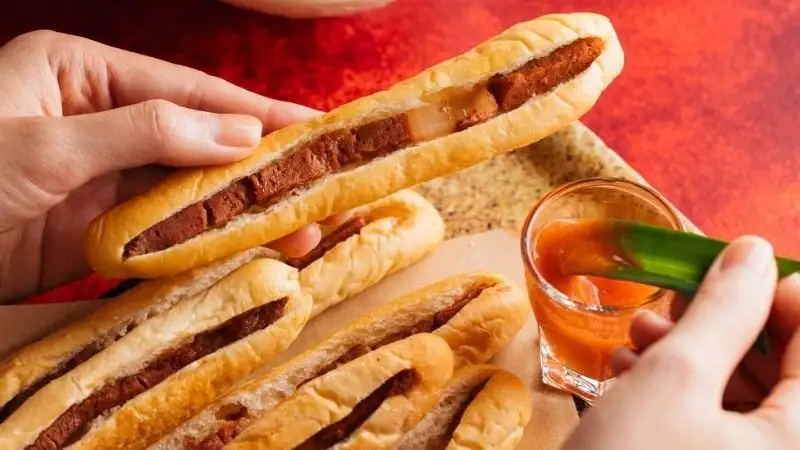
Banh mi que is a thin, crispy baguette filled with pâté and spicy chili sauce. Popular in Central Vietnam, especially Da Nang and Hai Phong, this snack is known for its crunchy texture and bold, savory flavor. Simple yet addictive, it’s a perfect on-the-go treat.
Signature traditional dishes
Beyond its vibrant street food culture, Central Vietnam cuisine is also defined by its rich and flavorful traditional dishes. These meals, often rooted in history and local customs, showcase the region’s unique cooking techniques and bold use of spices.
Bun Bo Hue (spicy beef noodle soup)
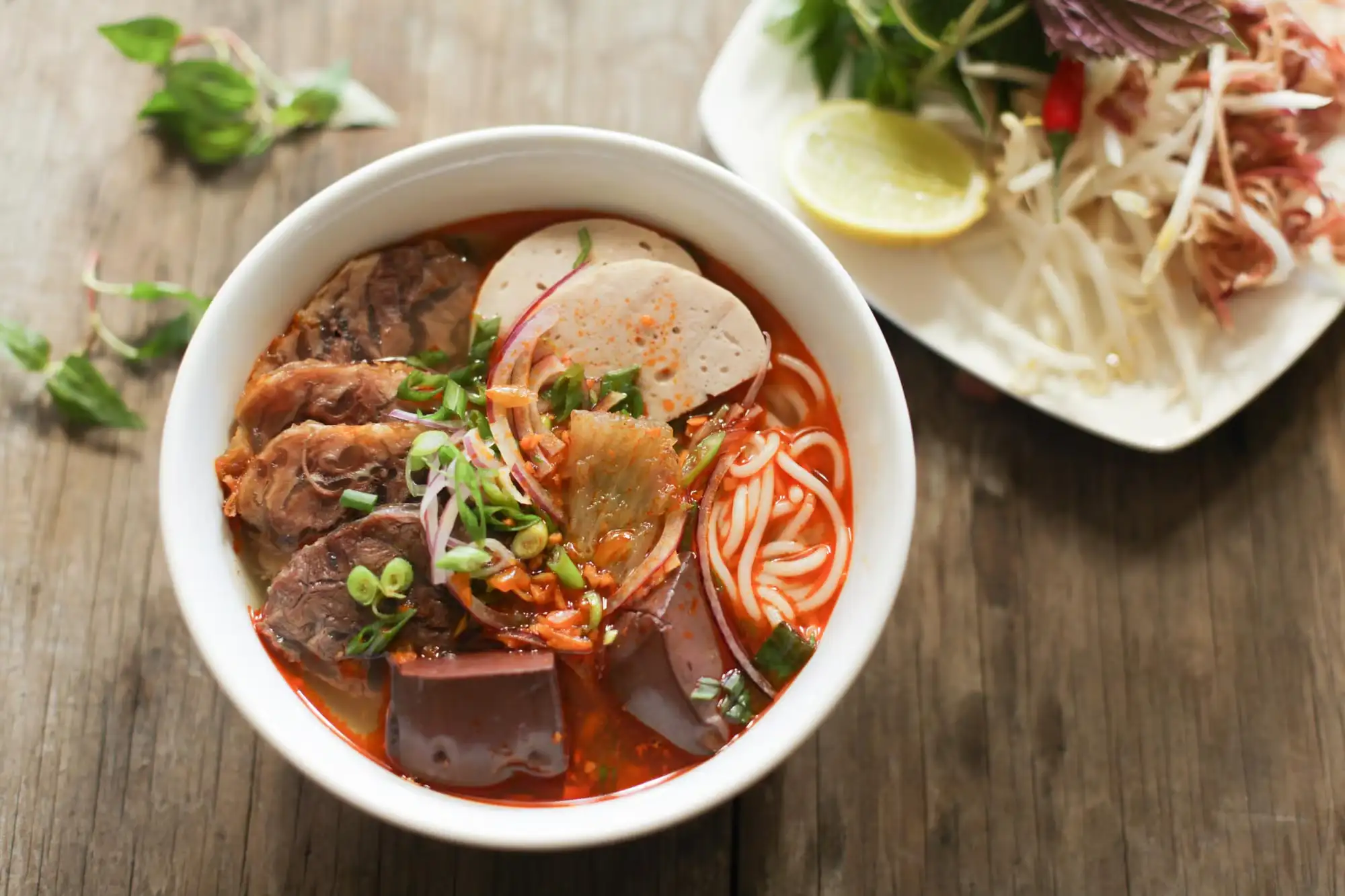
Bun bo Hue is the most famous dish from Hue, known for its rich, spicy broth made with beef bones, lemongrass, and fermented shrimp paste. Thick rice noodles are served with tender beef, pork knuckles, and sometimes congealed blood. Fresh herbs, lime, and chili add extra layers of flavor, making this dish a bold and satisfying meal.
Mi Quang
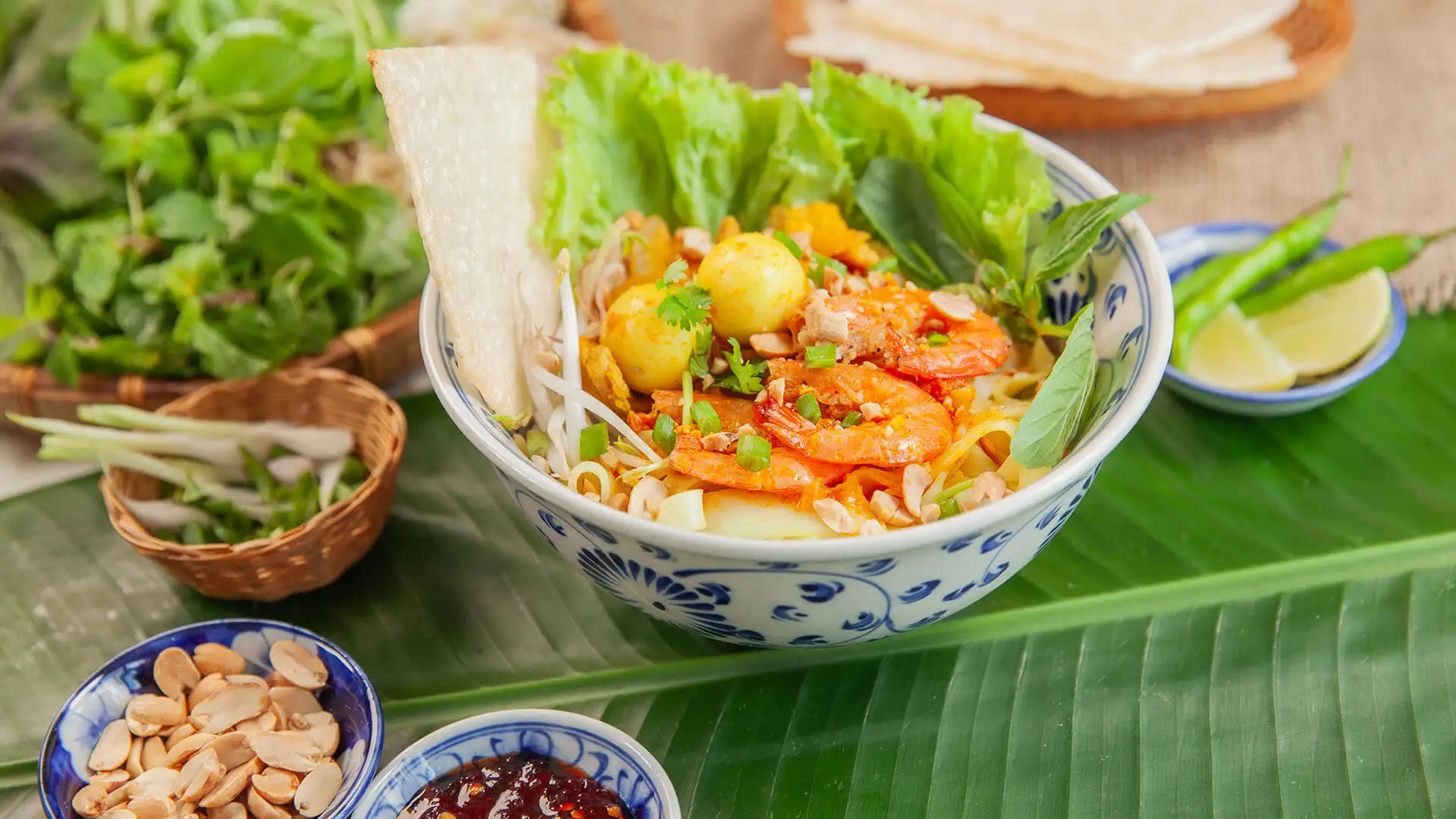
A vibrant dish both in color and taste, mi Quang is a signature specialty of Quang Nam province. The golden-hued noodles, tinted with turmeric, are served with just enough broth to coat them, allowing the rich flavors of pork, shrimp, and roasted peanuts to shine. A handful of fresh herbs and crispy rice crackers add texture, making each bite both crunchy and savory. More than just a meal, mi Quang represents the warmth and hospitality of Central Vietnam.
Cao Lau (Hoi An’s signature noodles)
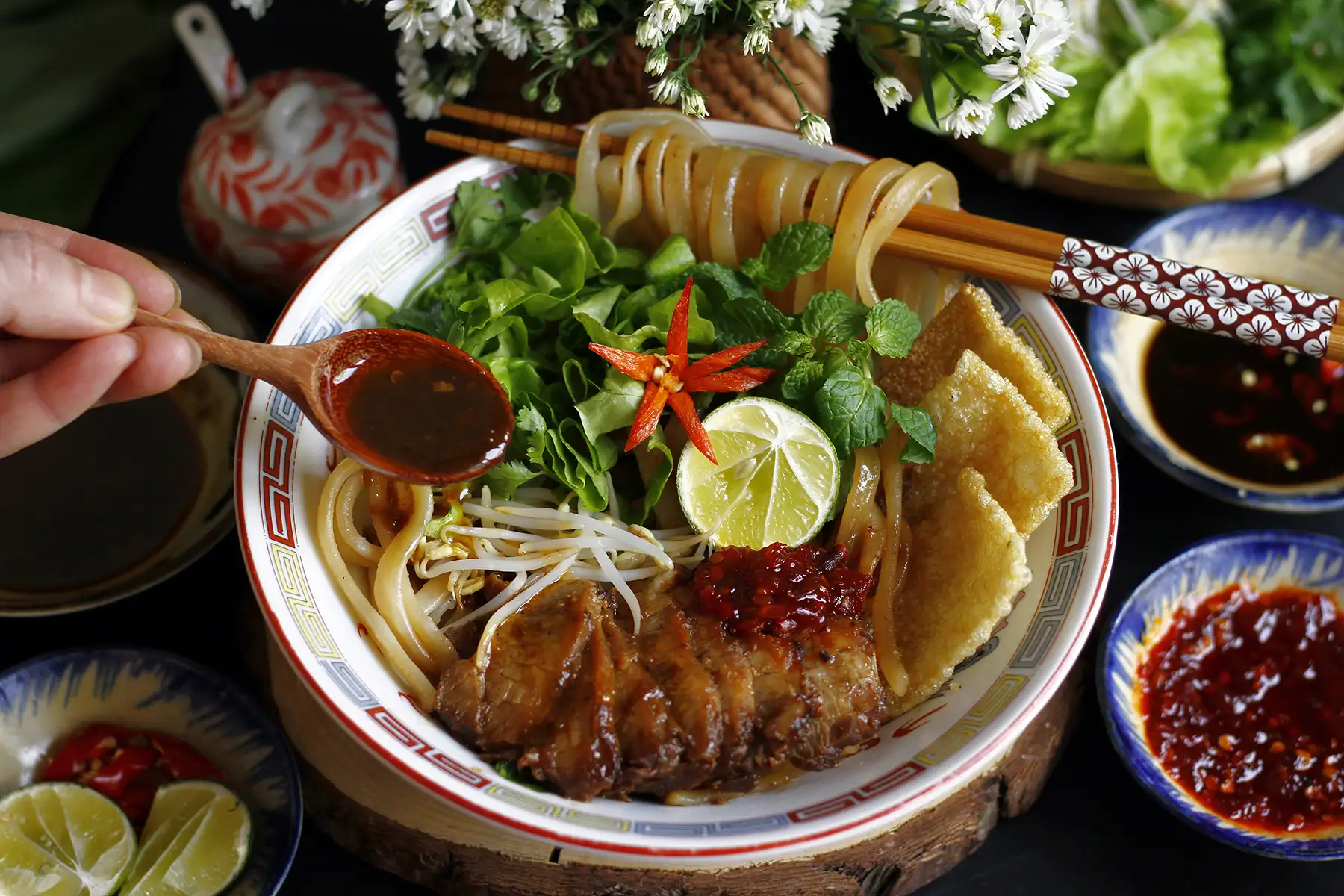
Steeped in history and mystery, cao lau is a dish unlike any other. Its signature noodles, said to be made using water from an ancient well in Hoi An, have a distinct chewy texture. The dish is a perfect balance of flavors, combining smoky, spiced pork, crispy croutons, and a light yet flavorful broth. Neither a soup nor a dry noodle dish, cao lau is a culinary experience unique to Hoi An, making it a must-try for anyone visiting the ancient town.
Com Hen (baby clam rice)
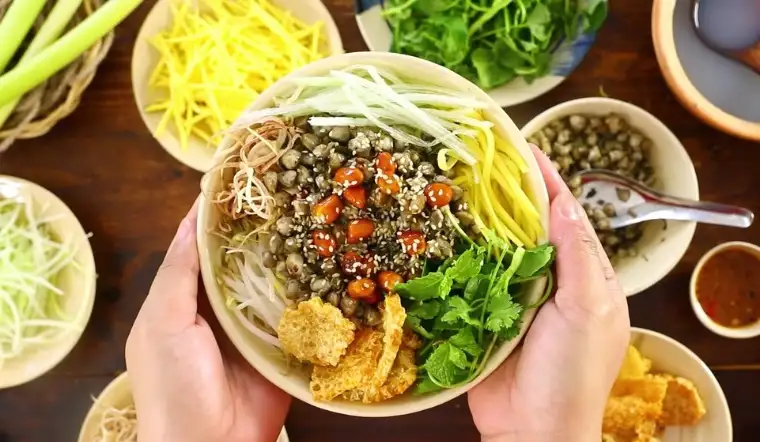
Simple yet incredibly flavorful, com hen is a dish that embodies the essence of Central Vietnamese cuisine. A humble bowl of steamed rice is topped with sautéed baby clams, roasted peanuts, crispy pork rinds, and fresh herbs, creating a delightful mix of textures. A small bowl of light clam broth is served alongside, allowing diners to enjoy the dish dry or mixed together for a more intense flavor. Bold, briny, and slightly spicy, com hen is a favorite comfort food of Hue locals.
Banh uot thit nuong (grilled pork with steamed rice paper)
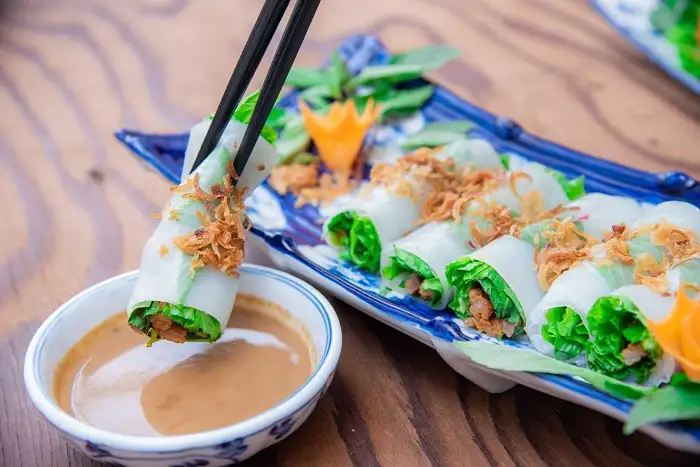
A simple yet flavorful dish, banh uot thit nuong combines thin, steamed rice sheets with smoky, grilled pork. The dish is typically served with fresh herbs, cucumber, and a dipping sauce made of fish sauce, garlic, and chili. Each bite offers a perfect balance of tenderness, smokiness, and freshness, making it a favorite among locals and visitors alike.
Bun ca Nha Trang (Nha Trang’s fish noodle soup)
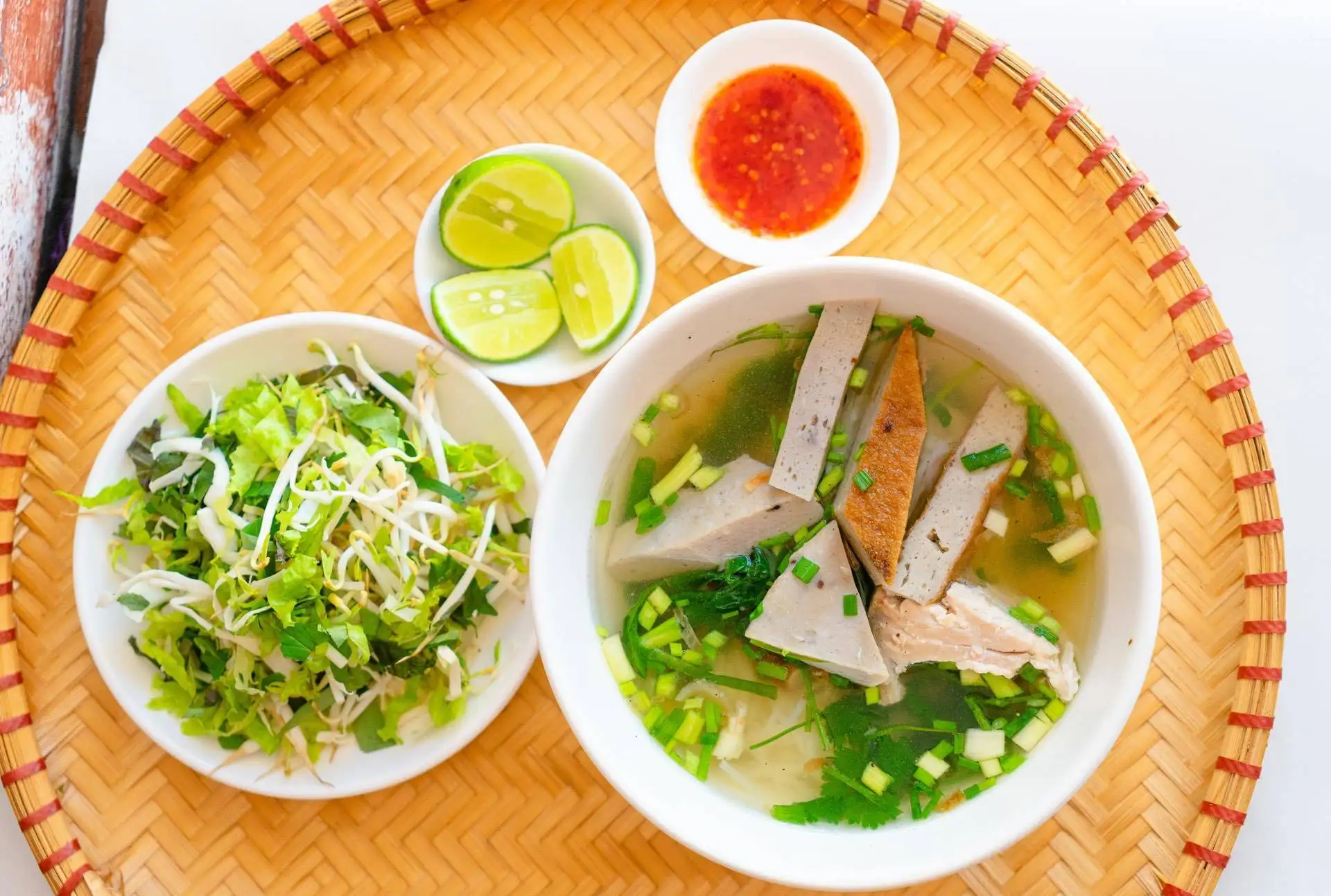
This noodle soup features a clear, mildly sweet broth made from simmered fish bones, giving it a delicate yet flavorful base. The dish is served with vermicelli noodles, tender fish fillets, and chewy fish cakes made from locally caught fish. A side of fresh herbs, lime, and chili enhances the taste, making bun ca a refreshing and satisfying dish that perfectly represents the coastal cuisine of Central Vietnam.
Nem nuong Nha Trang (grilled pork sausages)
Nem nuong Nha Trang is a famous grilled pork dish from the coastal city of Nha Trang, known for its smoky aroma, juicy texture, and rich dipping sauce. The dish consists of ground pork mixed with garlic, fish sauce, and spices, then shaped into sausages and grilled over charcoal until golden brown and slightly crispy on the outside.
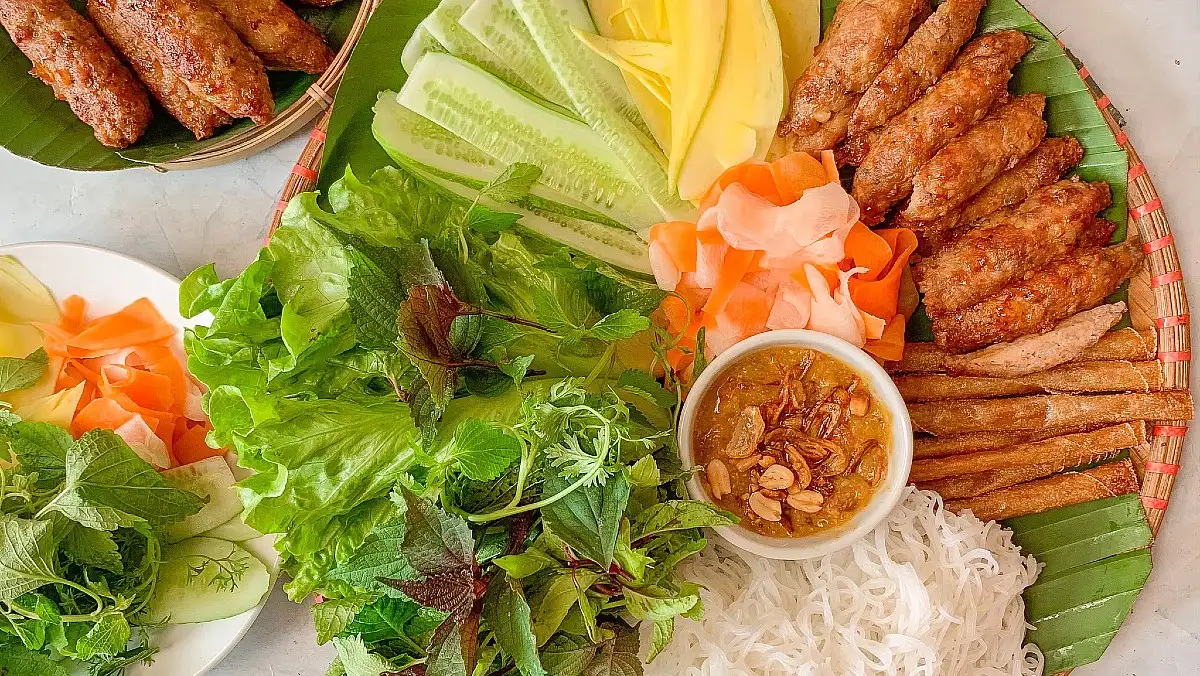
To enjoy nem nuong, diners wrap the grilled pork in soft rice paper along with fresh herbs, lettuce, pickled vegetables, and crispy fried rice paper rolls. The highlight of the dish is its special dipping sauce – a thick, peanut-infused blend with a slightly sweet and savory taste that enhances every bite.
Sup luon Nghe An (eel soup)

Sup luon Nghe An is a specialty of Nghe An province, featuring tender stir-fried eel in a rich, aromatic broth. Infused with lemongrass, chili, and turmeric, the soup has a bold, slightly spicy flavor. Served with crispy bread or soft noodles, it’s a hearty and flavorful dish that showcases the unique taste of Central Vietnam cuisine.
Banh cuon (steamed rice rolls)
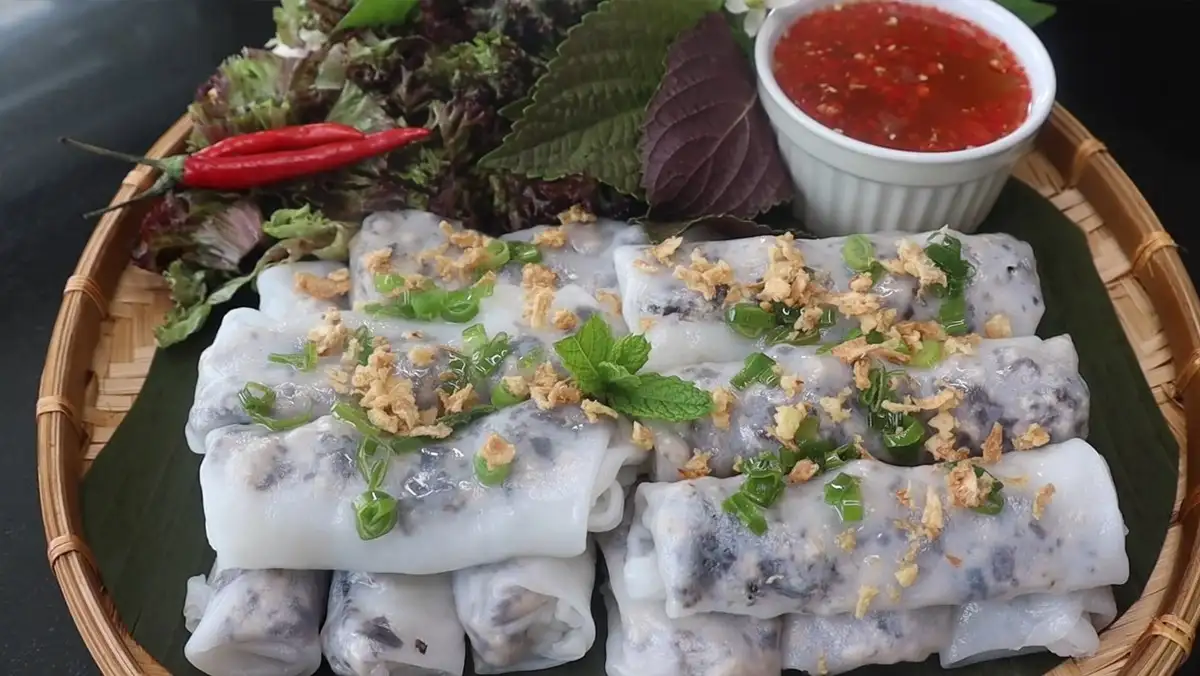
These thin steamed rice sheets are carefully rolled around a savory filling of minced pork and wood ear mushrooms, then topped with crispy fried shallots for extra texture. What truly elevates the dish is the dipping sauce—a balanced blend of fish sauce, lime, and chili—that enhances the light yet flavorful rolls. Served with fresh herbs and Vietnamese pork sausage (cha lua), banh cuon offers a delicate yet satisfying bite every time.
If you’re a true food lover, Central Vietnam cuisine should be on your must-try list. The perfect balance of sweet, spicy, sour, and savory makes these dishes unforgettable. Once you’ve experienced them, you’ll always crave a return visit.








